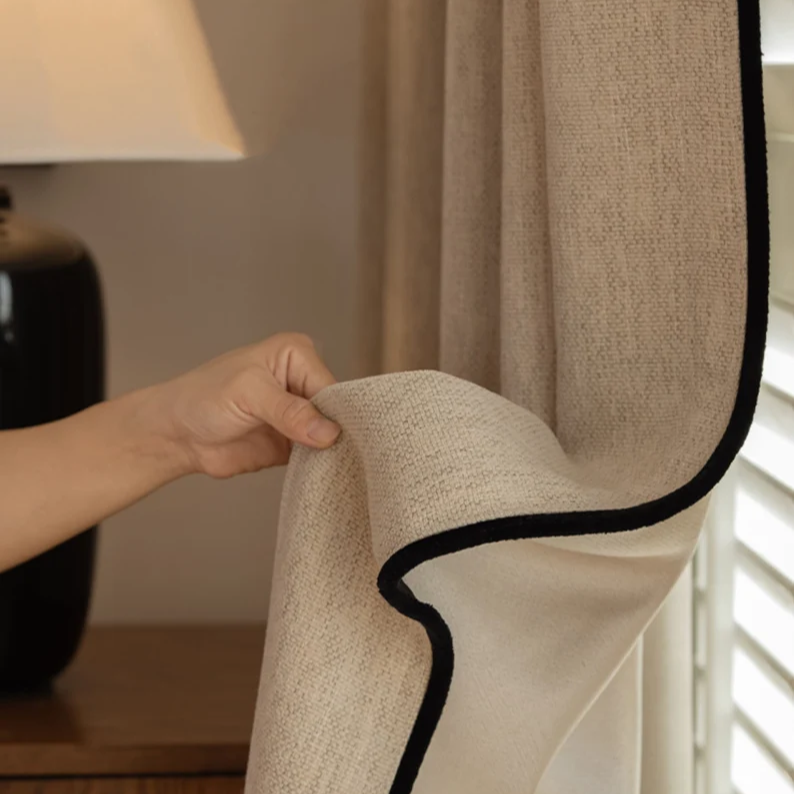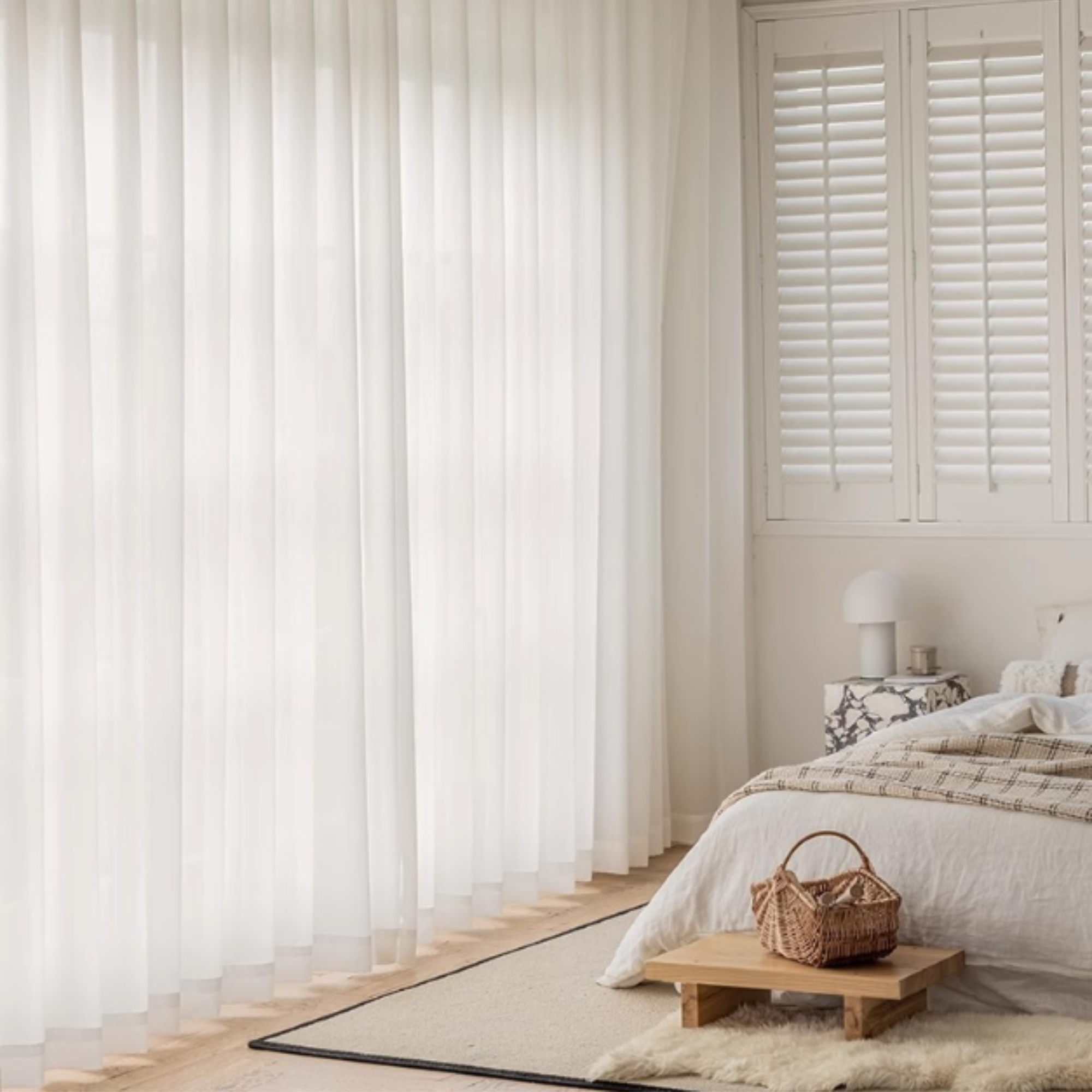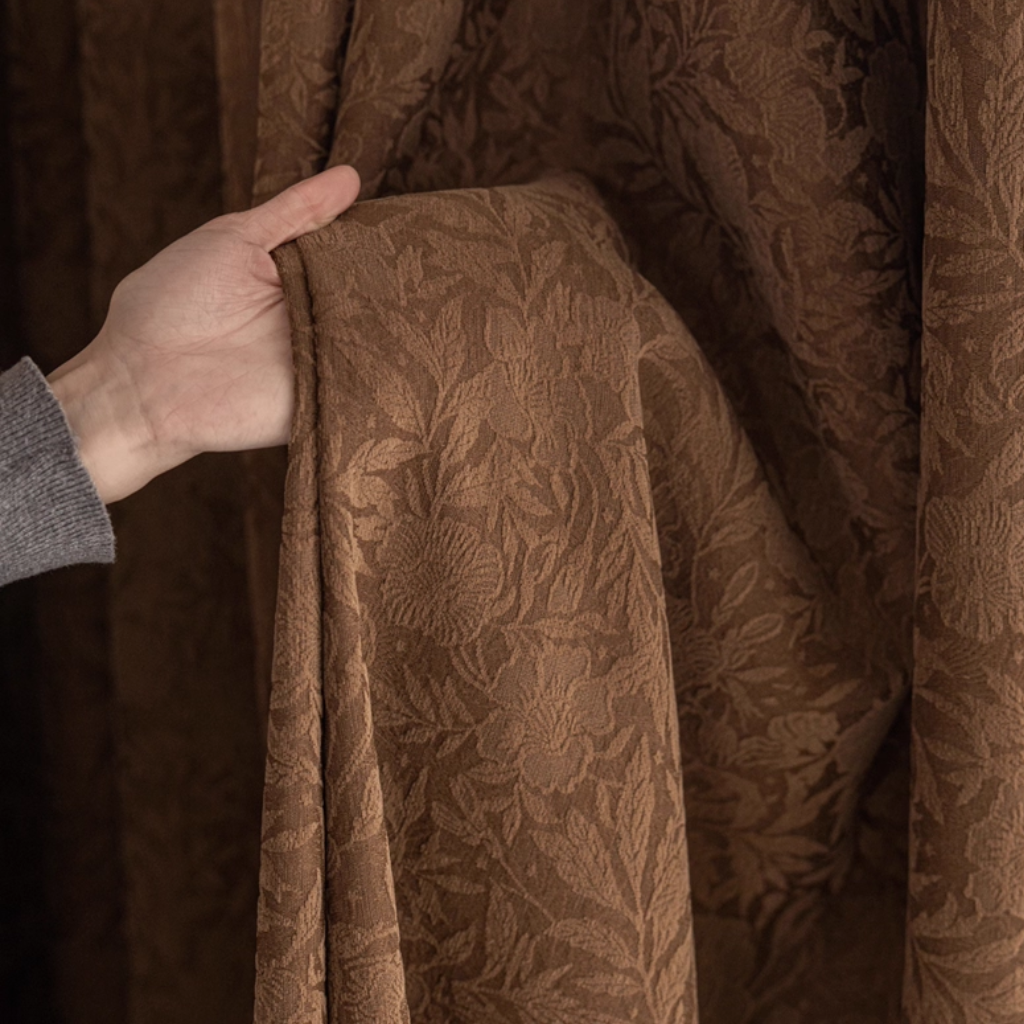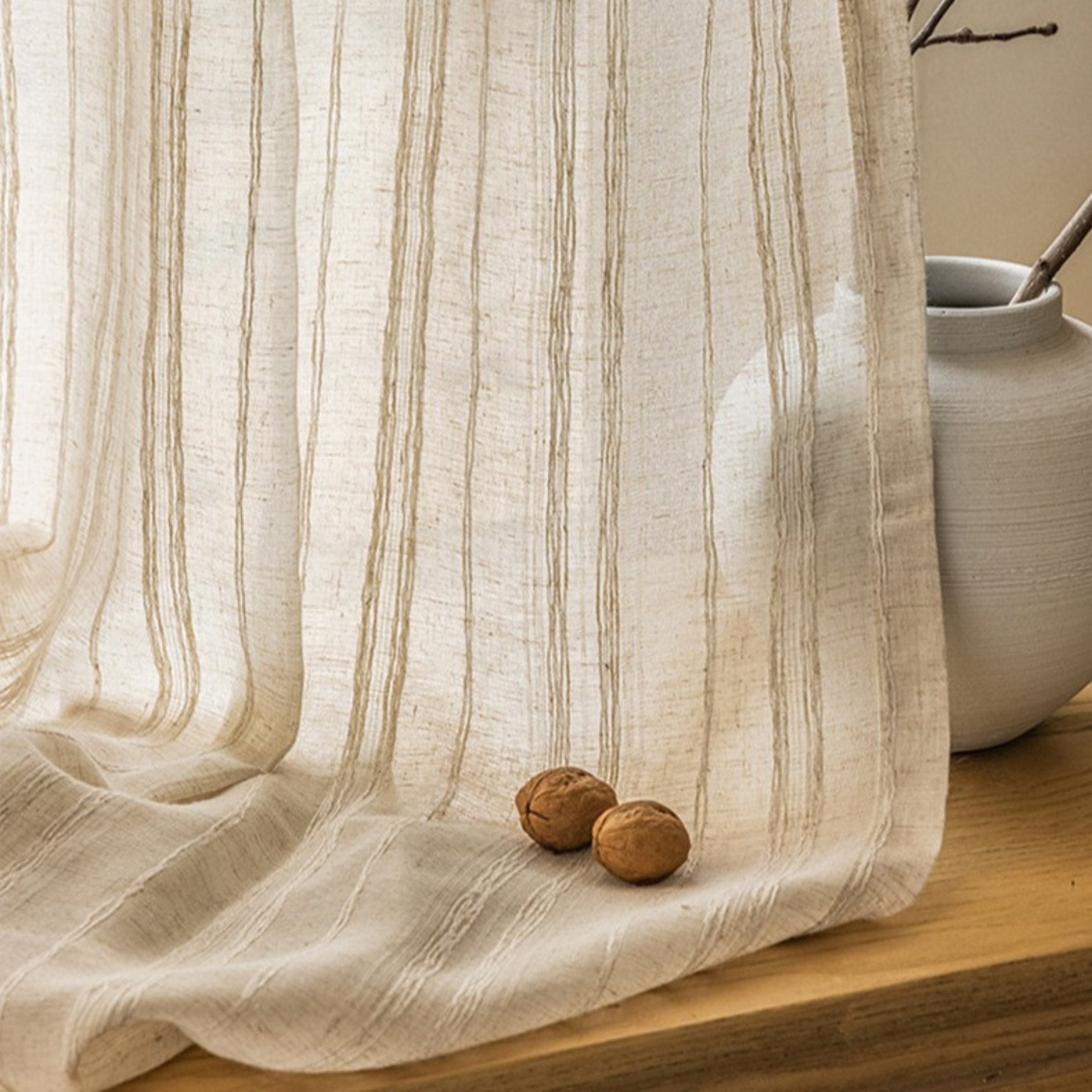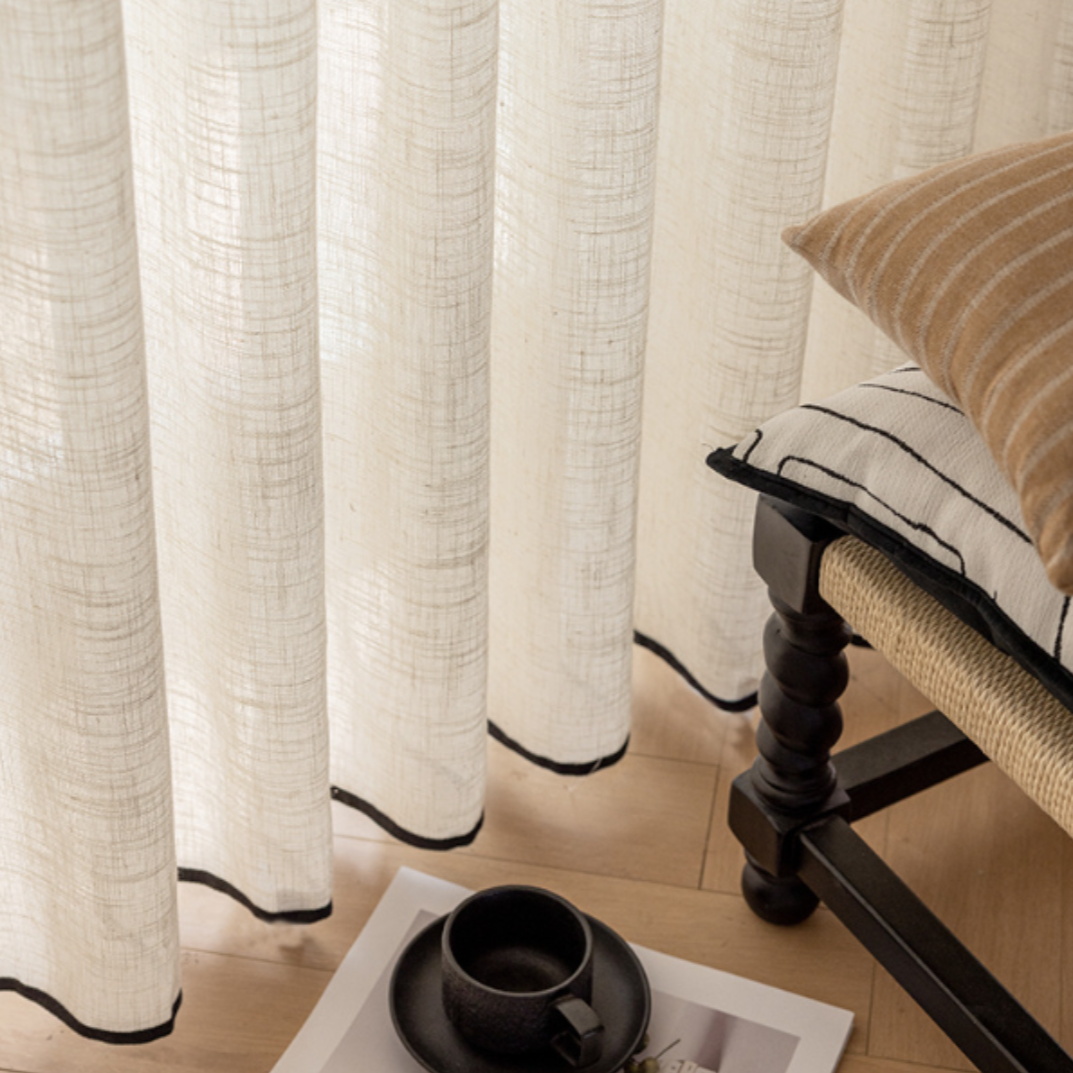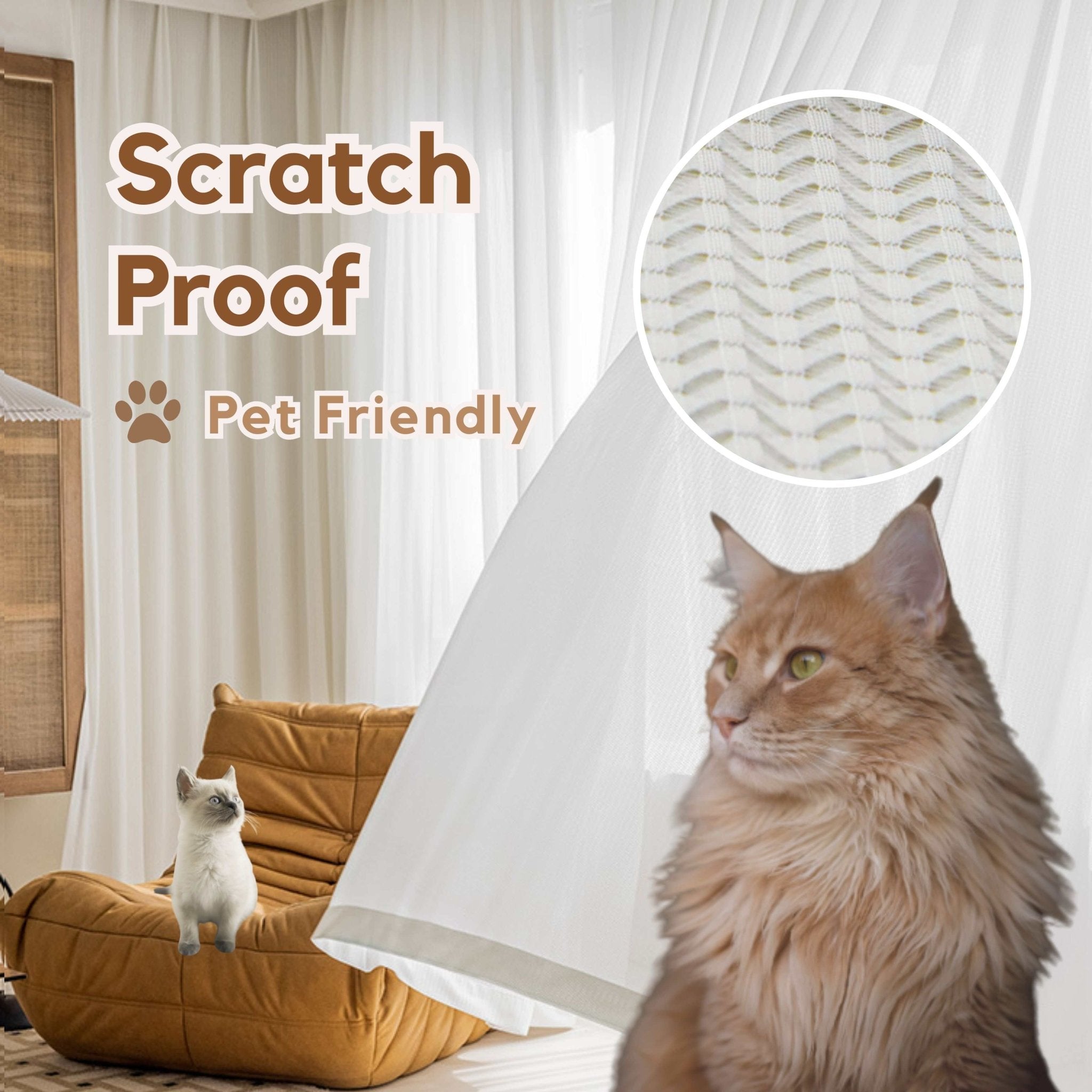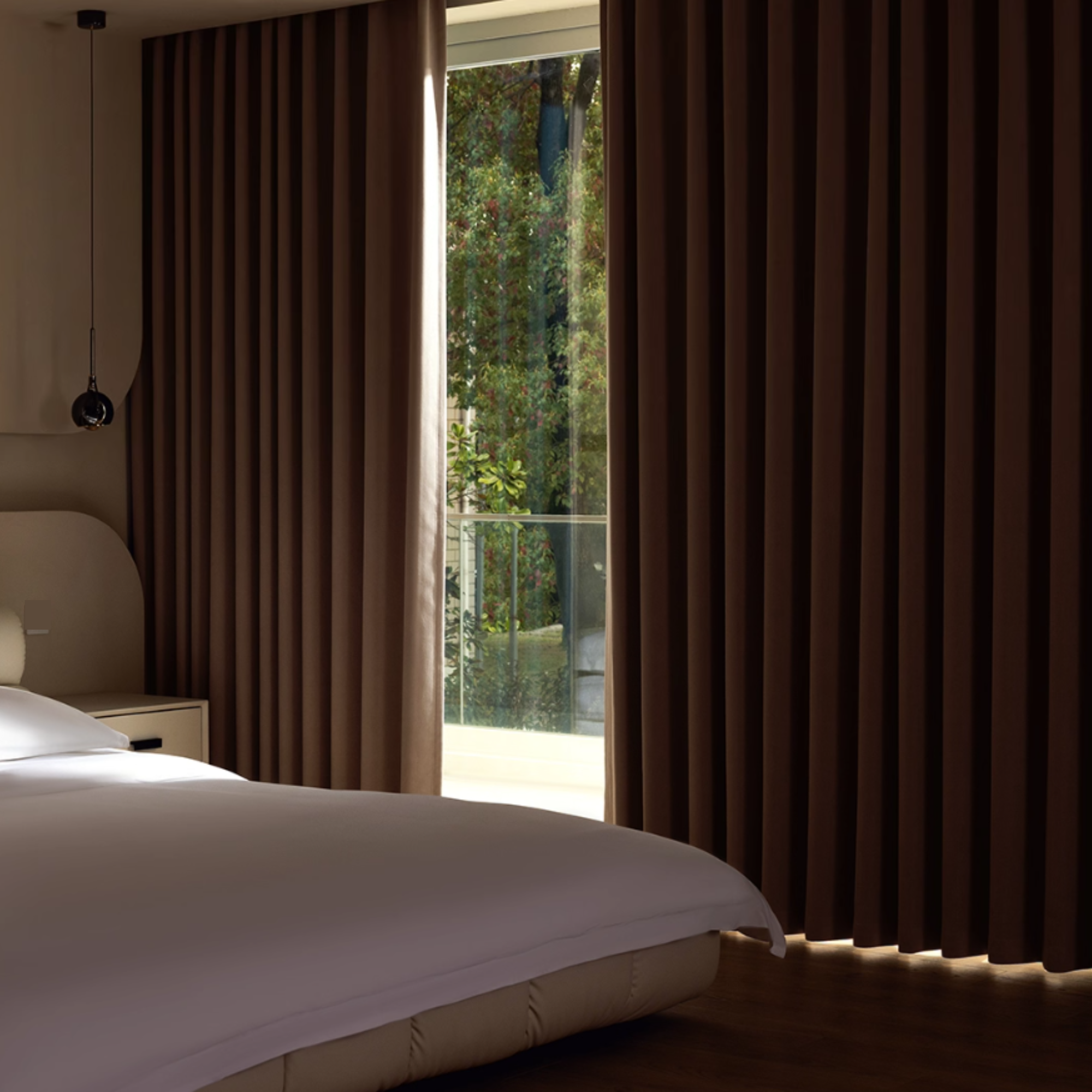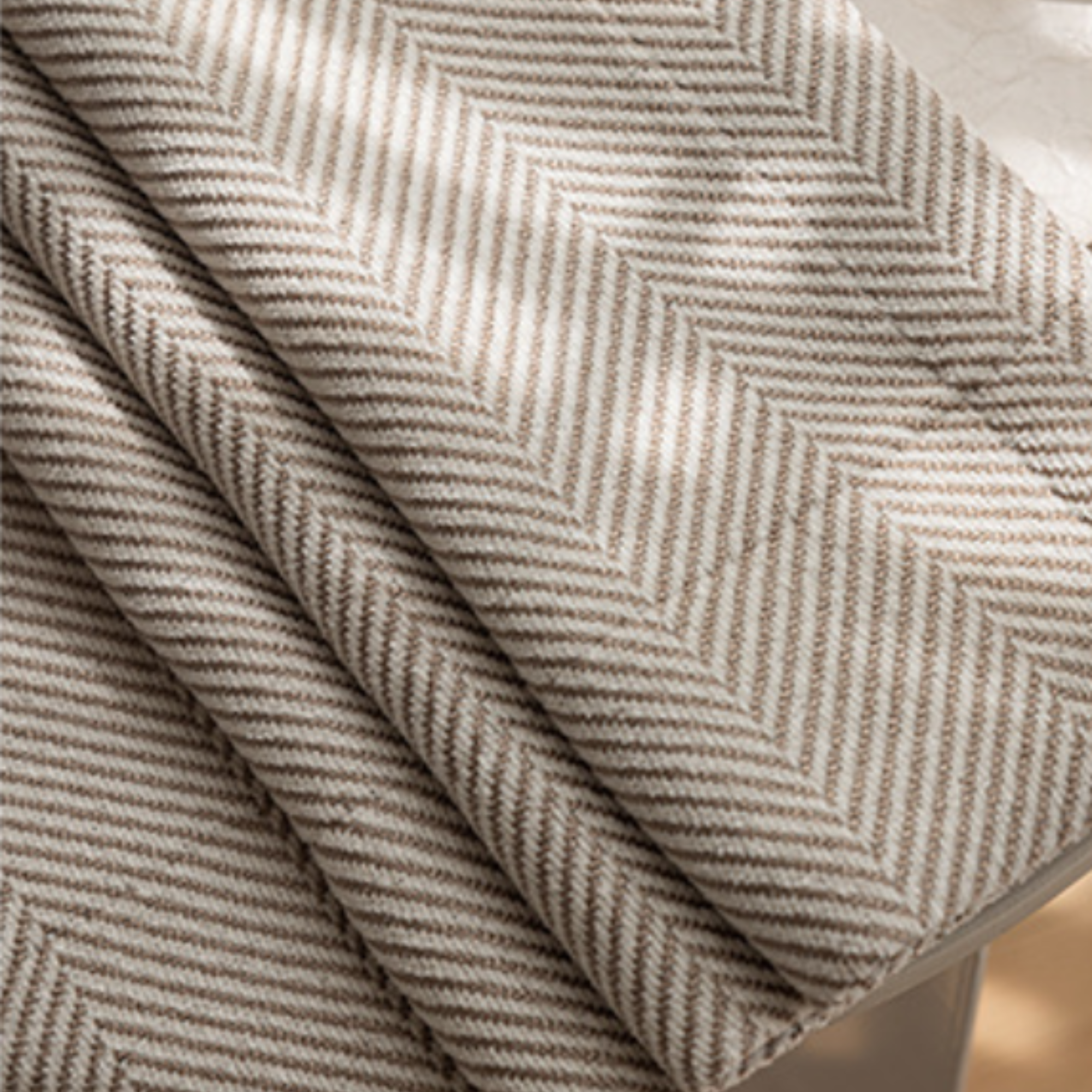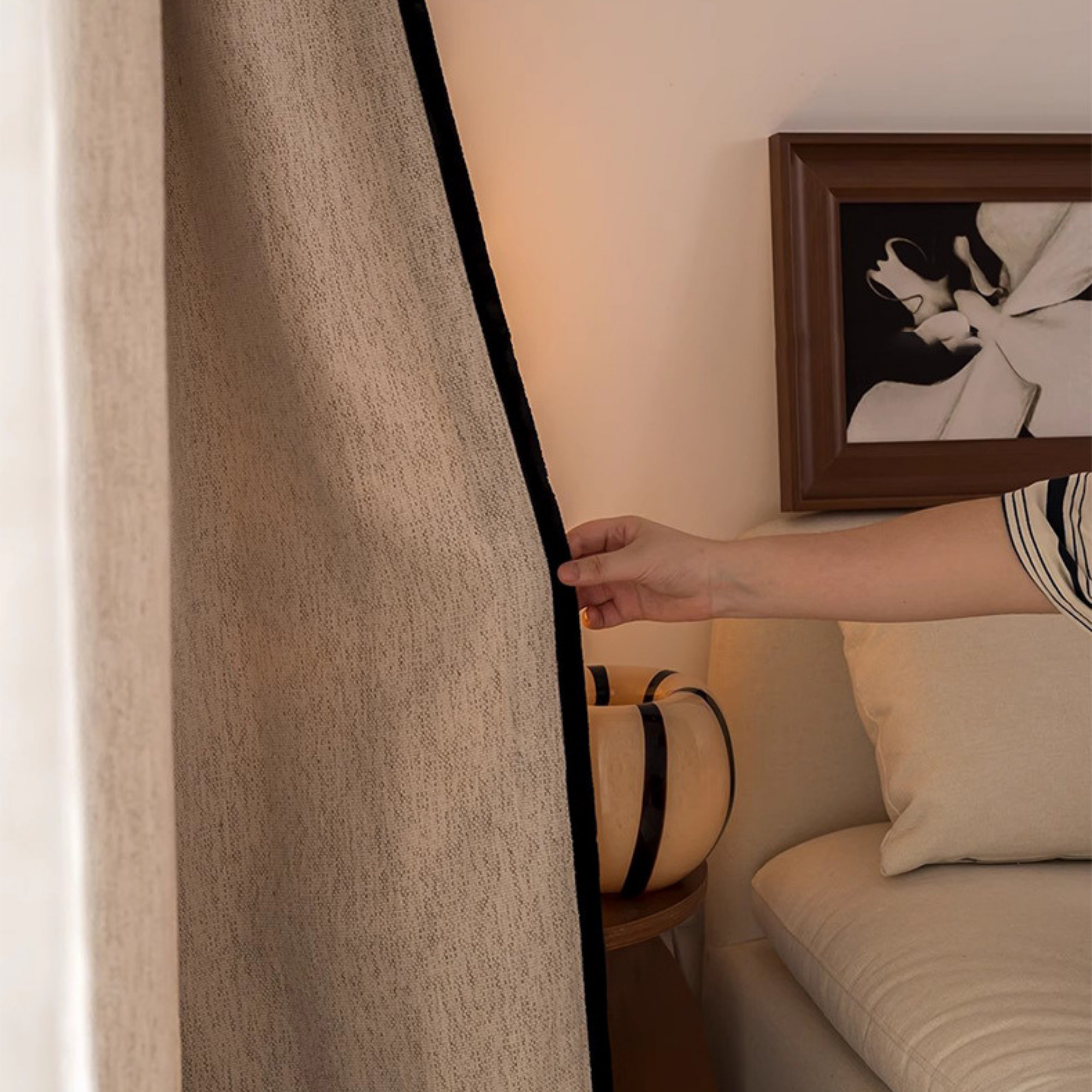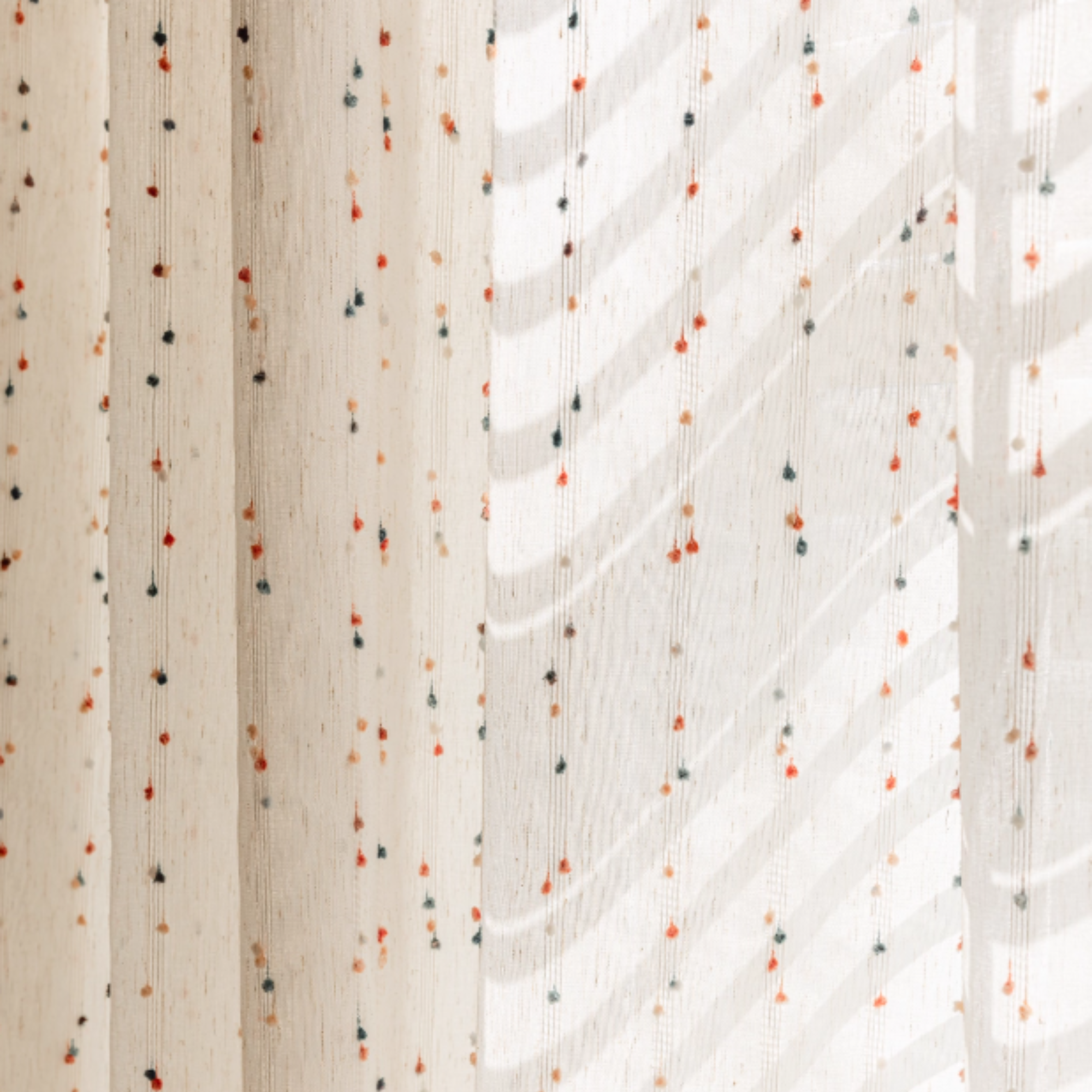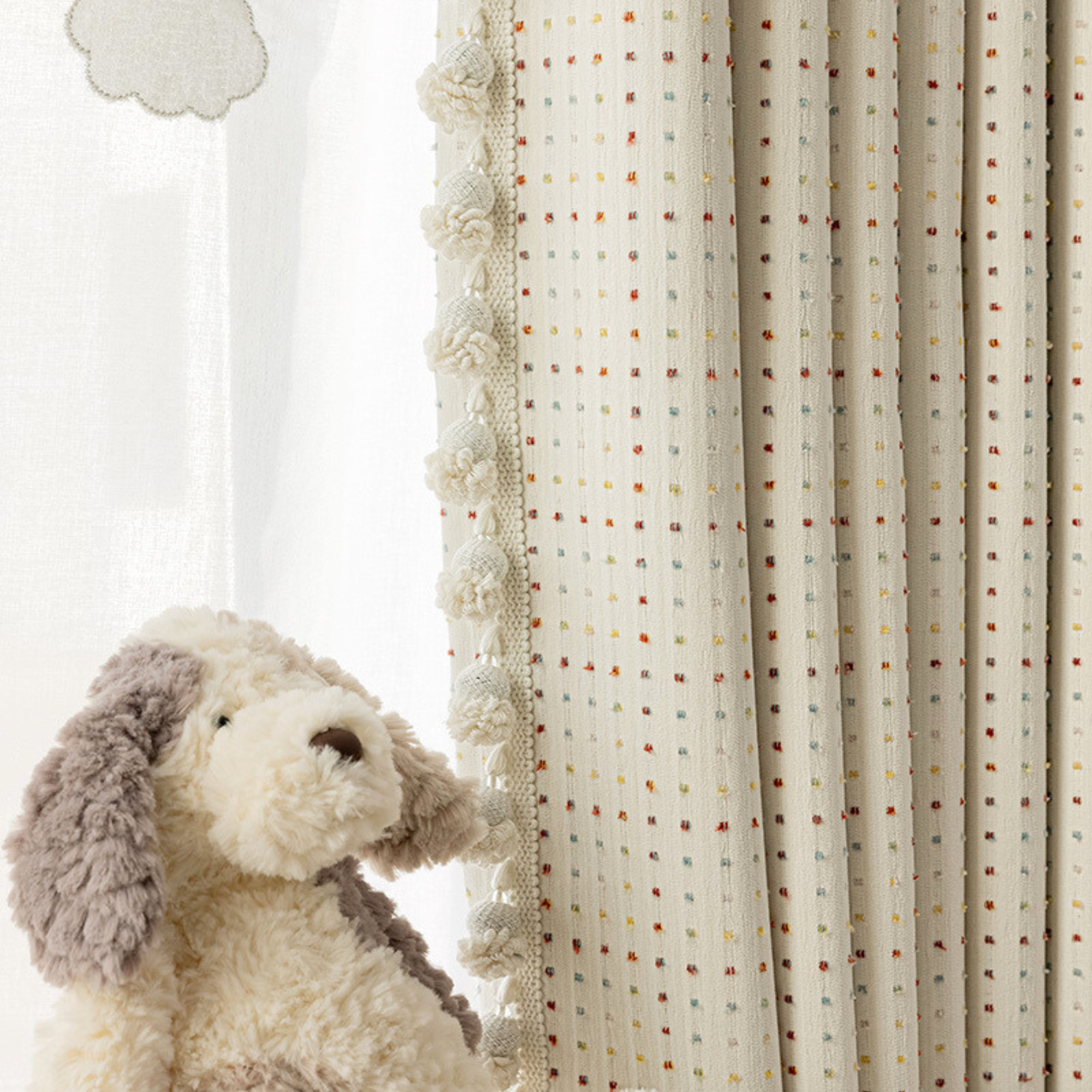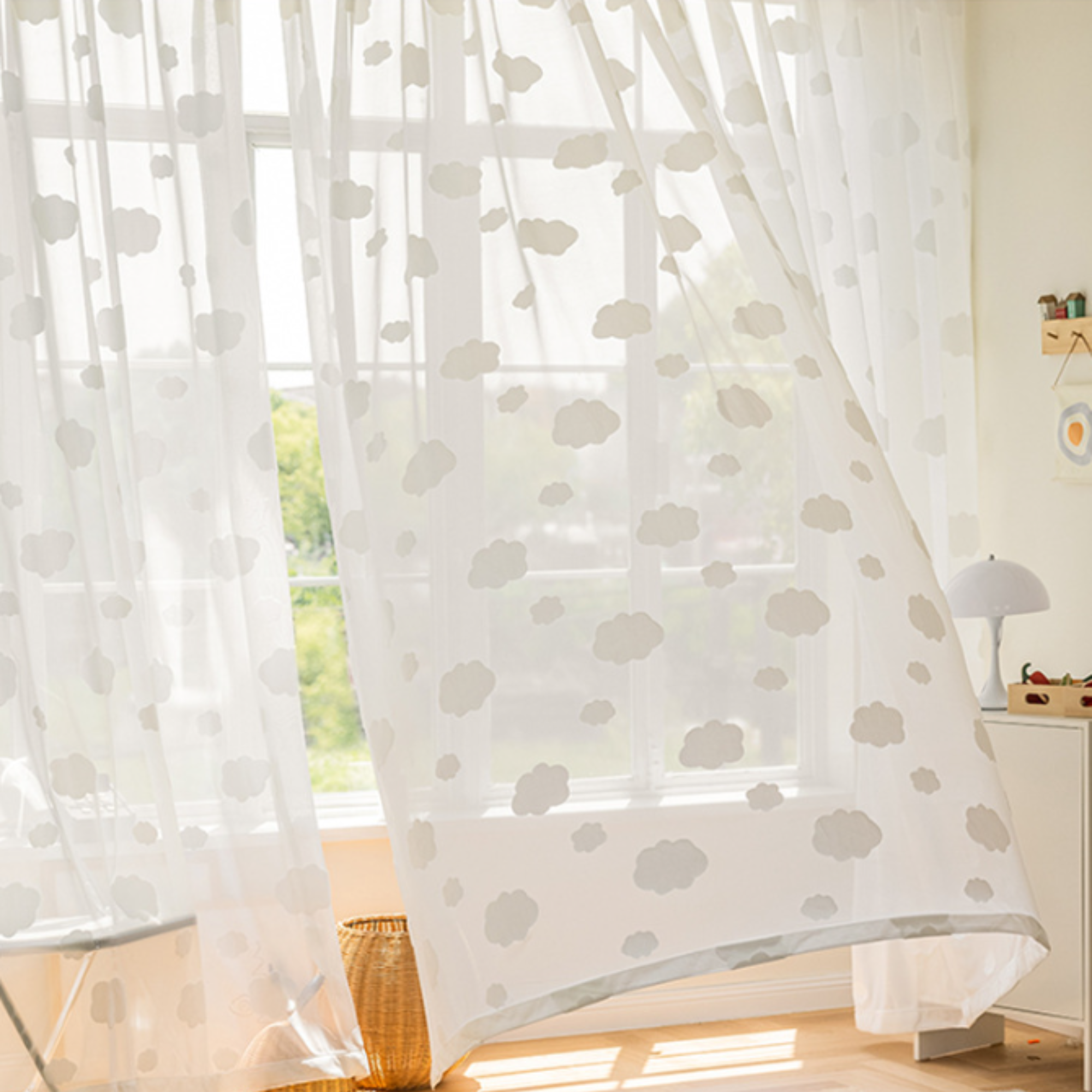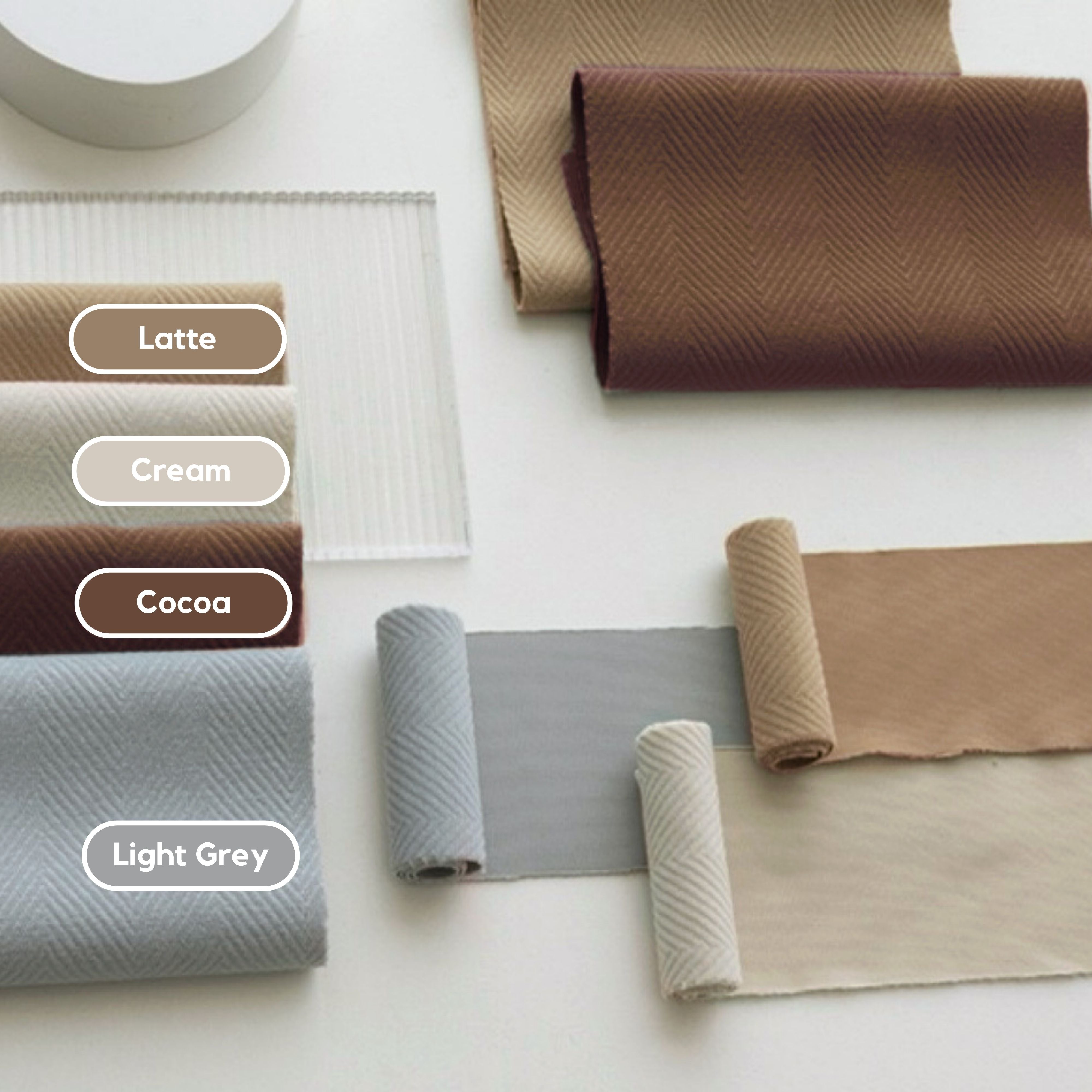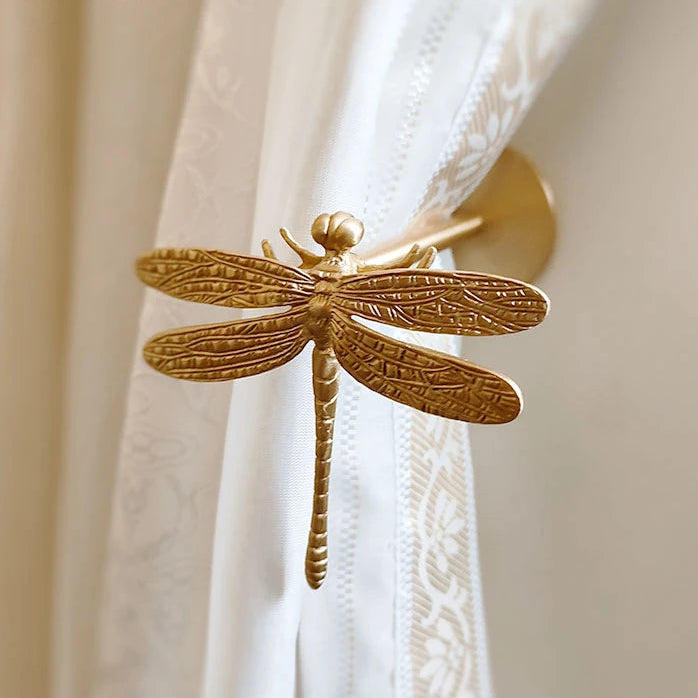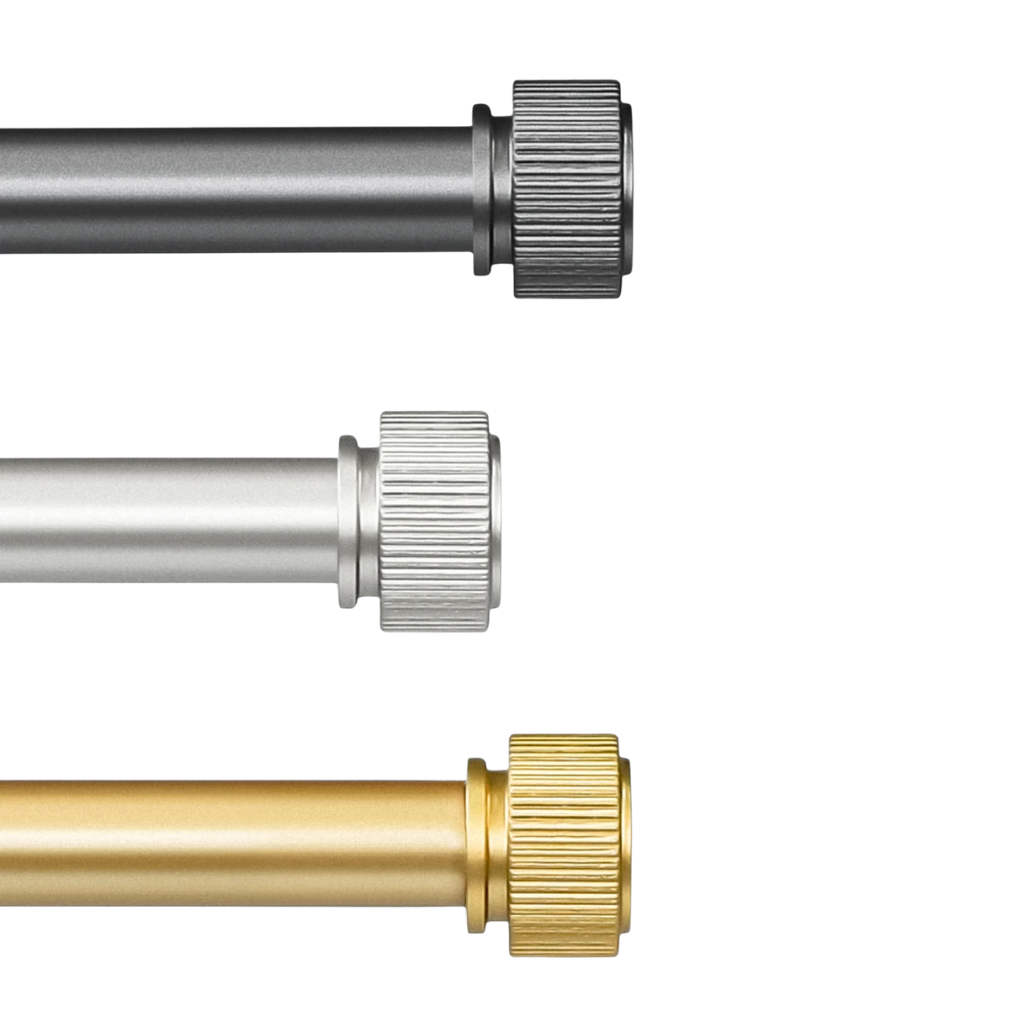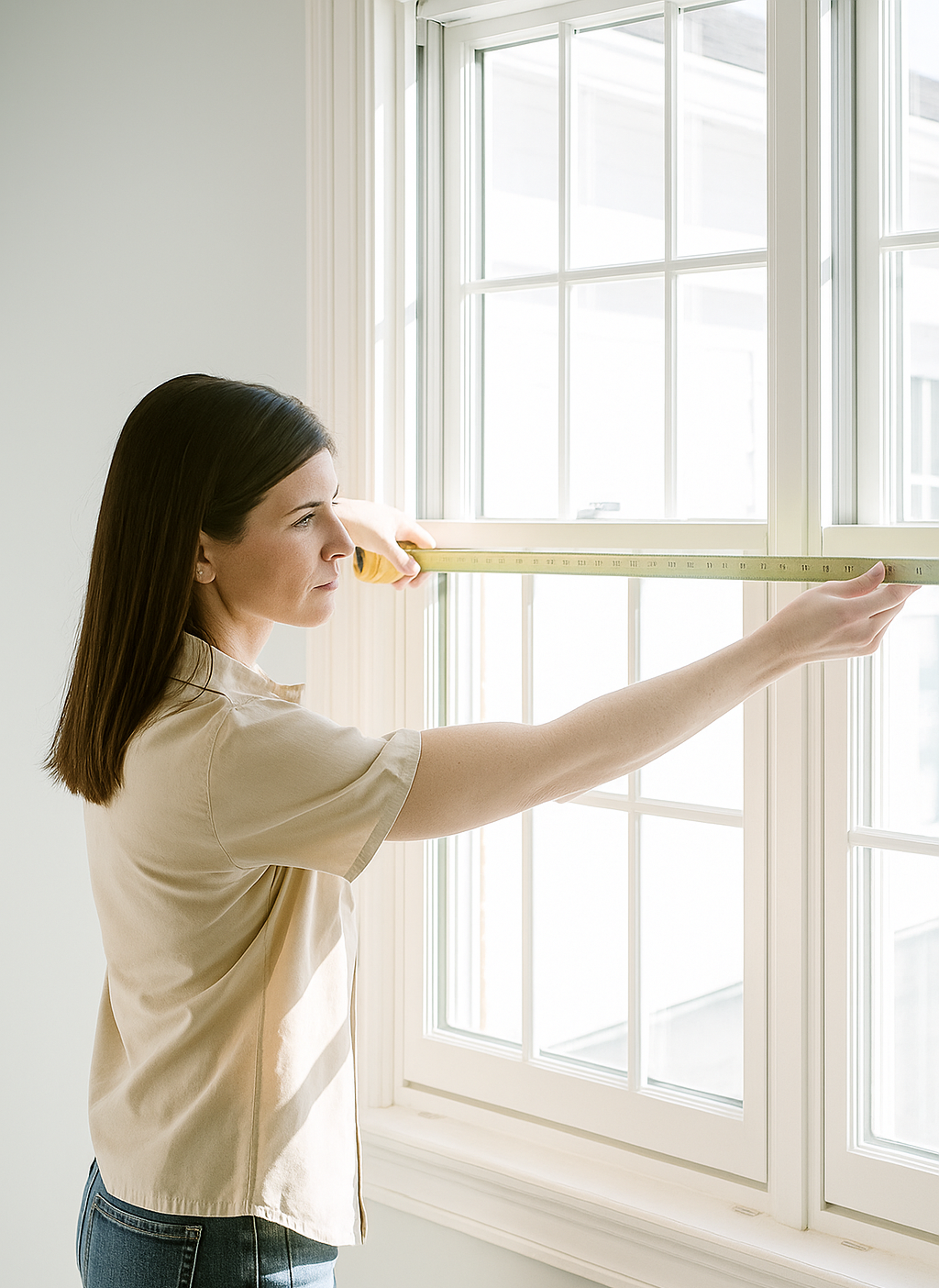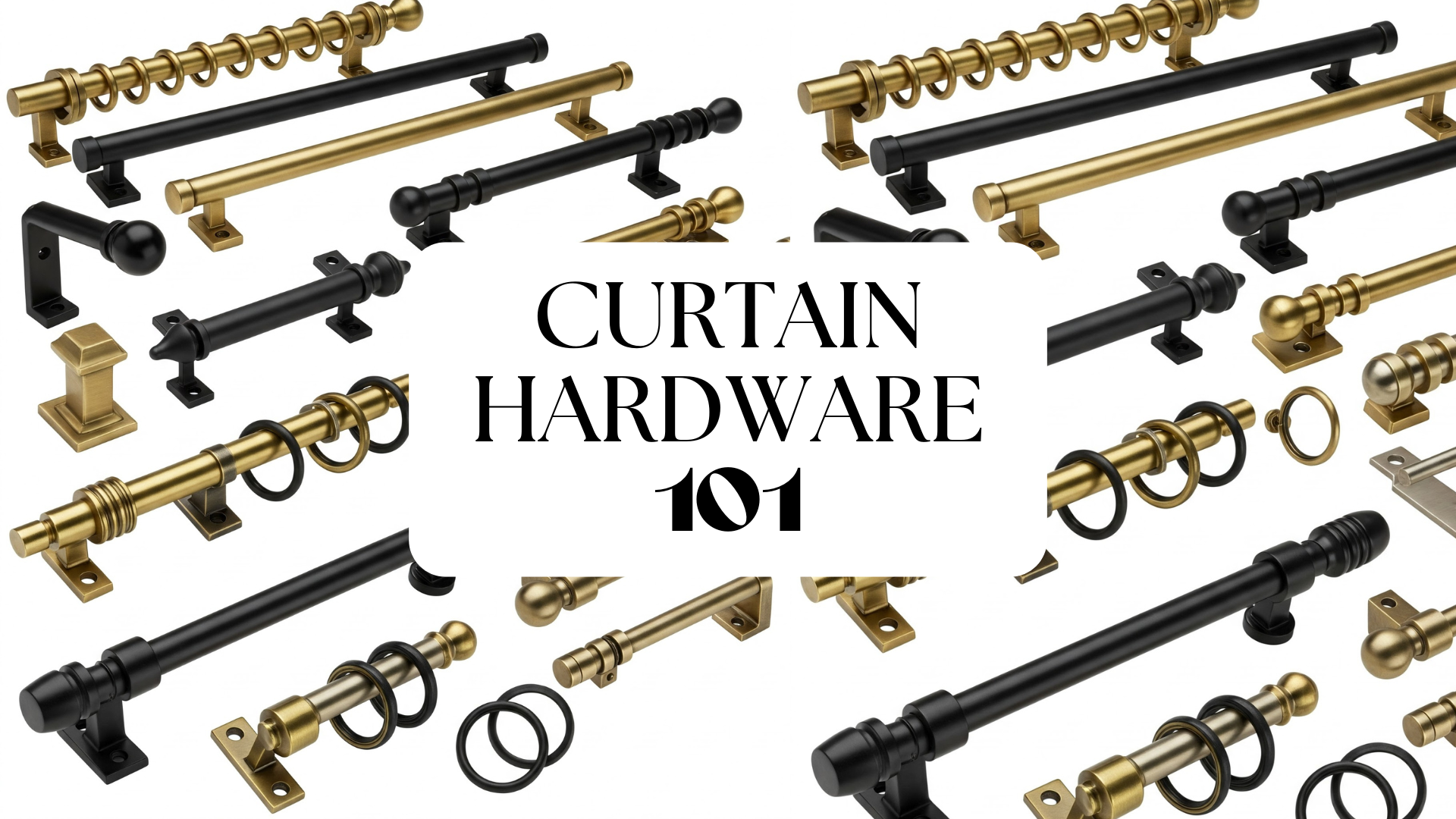Ever hung up new curtains only to find they don’t glide smoothly, the rod doesn’t fit quite right, or the brackets look outdated? Choosing the right curtain hardware isn’t just a minor detail—it’s the foundation of a well-dressed window. Whether you’re decorating a cozy apartment or designing a luxury space, the right curtain rods, rings, and holdbacks can make all the difference. This guide will help you navigate the wide range of options, from modern matte black curtain rods to decorative finials that add a touch of elegance. Get ready to transform your windows with ease—because great design starts with the right foundation.
1. Curtain Rods: Types and Functions
Choosing the right curtain rod is crucial for both function and style. The right rod ensures your curtains hang beautifully, operate smoothly, and complement your interior decor. Whether you're looking for a simple standard curtain rod, a versatile adjustable curtain rod, or a heavy-duty traverse rod, each type serves a unique purpose. Below, we break down the most popular options to help you find the best fit for your space.
A. Single Curtain Rods – Simple, Reliable, and Versatile
A single curtain rod or standard curtain rod is the most common option for everyday window treatments. Available in a variety of materials like metal, wood, and plastic, these rods work well for lightweight to medium-weight curtains. Single rods are easy to install and offer a simple, classic look that complements most interior decor styles. However, they may not be ideal for very heavy curtains or specialized window shapes, and their basic design might not be as visually impactful as decorative rods. Additionally, simpler rods may lack features like smooth gliding or adjustable lengths, which can be found in more specialized options.
- Best for: Classic curtain panels, sheer curtains, and lightweight drapes.
- Installation: Typically mounted with brackets on either end. Add a middle bracket for additional strength. Mount either on wall or window frame.
- Style Tip: Choose a finish that complements your curtain rings or finials—matte black for modern spaces, brushed nickel for contemporary looks, or antique brass for traditional interiors.
How to choose a good standard curtain rod:
- Think about weight: Heavier curtains need a thicker rod. A 1-inch diameter rod is a good all-around choice for most curtains.
- Material matters: Metal rods are strong and durable. Wood can look nice but might bend over time. Plastic is the cheapest but can break easily.
- Measure your window: Make sure the rod is wide enough to extend past the sides of your window at least 6 inches so your curtains can open fully.
B. Adjustable Curtain Rods – Perfect for Custom Fits
If you need flexibility, an adjustable curtain rod (also known as a telescoping curtain rod) is the way to go. These rods extend to fit various window sizes. They're basically several pieces that connect together with one adjustable end, making them really versatile.
Key Features:
✔️Expandable to fit your space – No need for precise measurements, as the length is adjustable
- Best for: Standard curtains in living rooms, bedrooms, and offices.
- Installation: Similar to the single curtain rod, easy to mount, with expandable length options.
How to choose a good adjustable curtain rod:
- 1-inch diameter is a good bet: Just like with standard rods, a 1-inch diameter is a good all-around size for most curtains. It's strong enough to hold a decent amount of weight.
- Smooth connection is KEY: Seriously, this is the most important thing. Check how the two pieces connect. If it looks like it will catch or snag, skip it. A smooth connection means smooth sliding.
- Material matters (again): Metal is generally the best for strength and durability. Avoid plastic if you can.
- Measure your window (roughly): Even though they're adjustable, you still need a general idea of how wide your window is. Make sure the rod can adjust to cover that width.
C. Double Curtain Rods – Layering Made Easy
For those who love the layered curtain look, a double curtain rod allows you to hang both sheer and blackout curtains on the same setup. They basically consist of two rods mounted close together, allowing you to hang two different sets of curtains. This is perfect for creating a balance of natural light and privacy.
Key Features:
✔️Two rods, two curtain layers – Layering sheer and blackout curtains gives versatile light control.
✔️ Enhanced insulation and privacy – Blackout curtains reduce heat and noise, while sheers maintain natural light.
✔️ Elegant and decorative – Creates a designer look in any space.
- Best for: Layering sheer and blackout curtains in bedrooms and living rooms.
- Installation: Requires double brackets for secure mounting.
-
Style Tip: Use a lightweight sheer curtain on the front rod and a thicker blackout curtain on the back rod for versatility.

How to choose good double curtain rods:
- Sturdy brackets: Double rod brackets need to be strong enough to support the weight of two sets of curtains. Check the weight capacity before you buy.
- Consider the look: Think about how the two rods will look together. Do you want them to match, or do you want the outer rod to be more decorative? Choose finishes that complement your curtains and décor.
- Measure your window: Just like with single rods, measure your window to make sure the double rod will extend past the sides for at least 6 inches.
- Think about layering: Consider the types of curtains you'll be layering. Sheers and drapes are a classic combination.
D. Traverse Curtain Rods – Smooth and Seamless Movement
Traverse curtain rods are rods with a built-in track or groove, designed for curtains that you want to open and close easily – think of them as the champions of smooth movement. Unlike standard rods, traverse rods have a track or groove where the curtain hooks or carriers glide along. Unlike standard rods, traverse rods combine a track and rod into one unit, eliminating the need for curtain rings. This allows you to smoothly draw your curtains open or closed.
Key Features:
✔️Track + Rod in One – Eliminates the need for brackets interfering with curtain movement.
✔️Ideal for heavy drapes – Supports large, floor-length curtains effortlessly.

- Best for: Anywhere you want to be able to open and close your curtains regularly. Perfect for living rooms, bedrooms, or any room where you want to control light and privacy quickly and easily. Also great for large windows or sliding glass doors.
- Installation: Wall-mounted just like regular rods for a seamless look.
- Style Tip: Choose a rod with decorative finials for a sophisticated touch or opt for a sleek, hidden track for a modern aesthetic.
How to choose a good traverse curtain rod:
- Check the Track: Run your finger along the track. It should feel smooth and even. Avoid tracks with bumps, dents, or rough spots.
- Test the Carriers: If possible, test the carriers to see how smoothly they glide. They should move easily without any resistance.
E. Tension Curtain Rods – A No-Drill Solution
A tension curtain rod is a pressure-mounted rod that holds itself in place without screws or brackets. This is the best option for renters or anyone who wants a temporary but stylish window treatment.
Key Features:
✔️No screws, no holes – Won’t damage walls, making it perfect for rental homes.
✔️Lightweight and easy to install – Just twist to tighten.
✔️Great for small spaces – Works in bathrooms, kitchens, or dorm rooms.
Things to keep in mind:
- Weight Limits are Low: Tension rods are generally only suitable for lightweight curtains. They won't hold heavier drapes.
- Slipping is Possible: If not installed correctly, or if overloaded, tension rods can slip or fall down.
- Size Restrictions: They work best within a specific range of window or door widths. They might not be suitable for very wide openings.
- Not the Most Stylish: Tension rods are often more functional than decorative. They might not be the best choice if you're going for a really elegant or formal look.
Best Uses:
- Temporary or rental homes – No need for wall damage.
- Café curtains & sheer panels – Works well with lightweight fabrics.
How to Choose the Best Curtain Rod for Your Home
With so many curtain rod options available, here’s how to narrow it down:
✔️Function First: Need adjustability? Go for an adjustable or telescoping rod. Want smooth operation? A traverse rod is best.
✔️Weight Matters: If you have heavy blackout curtains or drapes, opt for a traverse or double curtain rod. For lighter fabrics, a standard or tension rod will do the job.
✔️Match Your Interior Style:
- Minimalist & modern? Matte black or brushed nickel.
- Traditional & elegant? Gold or antique brass finishes.
- Farmhouse & rustic? Distressed wood and wrought iron.
By selecting the right curtain rod, you’ll ensure your window treatments look intentional, functional, and stylish.
📢 Next Up: Curtain Rings and Hooks – The Secret to Effortless Curtain Styling!
2. Curtain Rings and Hooks: Choosing the Right Support
Curtain rings and hooks may seem like small details, but they play a critical role in the functionality, movement, and style of your curtains. The right curtain rings ensure smooth gliding, while the right hooks provide a secure hold and enhance the drape of your fabric. Whether you’re looking for clip curtain rings for easy hanging, grommet curtain rings for a seamless look, or pleated curtain hooks for a structured drape, understanding your options will help you achieve both aesthetics and practicality.
In this section, we’ll break down the most popular curtain rings and hooks, their best uses, and how to choose the right option for your window treatment.
A. Standard Curtain Rings – The Classic Choice
Curtain rings are circular attachments that slide over the curtain rod, allowing for easy movement. They are available in a variety of materials, including metal, wood, and plastic, and can either clip directly onto the curtain or hold onto hooks that attach to the curtain fabric.
Key Features:
✔️Smooth gliding – Reduces friction and prevents fabric from getting stuck.
✔️Versatile and easy to install – Works with almost all curtain types.
✔️Available in multiple finishes – Choose black, gold, bronze, brass, or silver to match your curtain rods.
Best Uses:
- Living rooms & bedrooms – Works well with grommet, pinch pleat, and rod-pocket curtains.
- Classic and modern interiors – Complements traditional, industrial, and contemporary designs.
💡 Pro Tip: To create a sleek, uniform look, match your curtain rings with your curtain rod finish (e.g., matte black rings with a black rod, brass rings with a gold rod).
B. Clip-On Curtain Rings
Clip curtain rings offer an effortless way to hang curtains without needing hooks or sewn-in attachments. They feature small clips attached to the rings, which grip the curtain fabric directly.

Key Features:
✔️No sewing or grommets needed – Just clip them onto the fabric. Works with Rod Pocket Header
✔️Perfect for lightweight curtains – Works well with sheer, cotton, or linen curtains.
✔️Easily adjustable – Allows you to change the curtain’s length by clipping higher or lower.
Best Uses:
- Casual and farmhouse styles – Works great with breezy linen or café curtains.
💡 Pro Tip: Space the clips evenly to prevent sagging and create a uniform drape.
C. Grommet Curtain Rings – A Built-in, Modern Look
Grommet curtain rings are metal or plastic reinforced holes built directly into the curtain fabric, eliminating the need for separate rings or hooks. These rings provide a sleek, contemporary look and ensure easy sliding across the curtain rod.
Key Features:
✔️No additional rings or hooks needed – The curtain fabric itself slides onto the rod.
✔️Best for modern designs – Clean, structured folds create a sleek look.

Best Uses:
- Contemporary and modern interiors – Works well with velvet, polyester, or blackout curtains.
- High-traffic areas – Perfect for living rooms, bedrooms, and offices where curtains are opened and closed frequently.
💡 Pro Tip: Make sure to choose a curtain rod with a diameter slightly smaller than the grommet hole for smooth sliding.
D. Curtain Hooks and Pins – For Pleated and Heavy Drapes
If you have pinch pleats or French pleats, curtain hooks and pins are essential for achieving a structured, elegant look. These hooks attach to the back of the curtain, allowing the fabric to drape beautifully while keeping the rod visible.

Key Features:
✔️Creates a tailored, polished appearance – Ideal for formal window treatments.
✔️Works with traverse rods – Ensures smooth gliding on a track system.
✔️Best for heavy fabrics – Strong enough to support velvet, blackout, and luxury drapes.
💡 Pro Tip: When you purchase from Lumos, curtain hooks are included when you choose the Double Pinch Pleat header style.
How to Choose the Right Curtain Rings and Hooks
When selecting curtain rings or hooks, consider these factors:
✔️Curtain Type: Grommets and rod-pocket curtains don’t need separate rings, but pinch pleated curtains do.
✔️ Ease of Use: If you open and close your curtains frequently, grommet rings or traverse hooks offer the smoothest glide.
✔️ Style Preference: For a traditional look, use curtain hooks; for a modern touch, choose grommet rings.
✔️ Durability: Metal curtain rings and hooks last longer than plastic ones, especially for heavy drapes.
3. Curtain Tiebacks and Holdbacks: Function Meets Aesthetic
Curtain tiebacks and holdbacks are small details that make a big difference. They control how your curtains drape, allowing more light into the room while adding a decorative accent to your window treatment
A. Fabric Tiebacks – Soft and Elegant
Fabric tiebacks are flexible bands made of rope, fabric, or decorative material that gently pull curtains to the side.
💡 Pro Tip: When you purchase blackout or room darkening curtains from Lumos, we will gift you matching curtain tiebacks. Choose embellished tiebacks with beads or tassels for an elegant touch.
B. Metal Holdbacks – Structured and Stylish
Metal curtain holdbacks are rigid, wall-mounted hooks that hold curtains in place at a fixed position. There are many styles, and they are generally more expensive.

4. Curtain Hardware by Style
Your choice of curtain hardware plays a major role in defining the overall aesthetic of your space. Whether your home follows a modern, traditional, rustic, or industrial theme, selecting the right rods, rings, brackets, and finials will help tie the design together seamlessly.
Modern and Minimalist
For a sleek, contemporary look, opt for thin, metal curtain rods with simple finials or hidden track systems that blend into the ceiling.
- Recommended Finishes: Matte black, brushed nickel, or polished chrome.
- Hardware Styles: Slim, straight rods with geometric or low-profile finials.
- Best Pairing: Sheer or structured drapes in neutral tones like white, beige, or gray.
Classic and Traditional
Traditional homes benefit from ornate curtain rods, decorative finials, and elegant holdbacks that add a touch of grandeur.
- Recommended Finishes: Antique brass, bronze, or gold.
- Hardware Styles: Thick, carved wood rods or intricate metalwork.
- Best Pairing: Heavy drapes, velvet, or patterned curtains.
Rustic and Farmhouse
The farmhouse aesthetic thrives on natural materials and vintage-inspired elements.
- Recommended Finishes: Distressed wood, wrought iron, or antique white.
- Hardware Styles: Wooden rods with carved finials, industrial-style iron brackets.
- Best Pairing: Linen or cotton drapes in neutral earth tones.
Industrial and Urban
For loft-style or industrial homes, exposed metal curtain rods and minimalist hardware create a bold, edgy look.
- Recommended Finishes: Black iron, brushed steel, or gunmetal.
- Hardware Styles: Pipe-style curtain rods, oversized metal rings.
- Best Pairing: Floor-to-ceiling curtains in bold colors or geometric prints.
By aligning your curtain hardware with your décor style, you’ll create a space that feels cohesive, intentional, and visually stunning.
5. Curtain Hardware by Color and Finish
Choosing the right curtain hardware color and finish is just as important as selecting the style. The finish you choose can blend into the background or make a statement, affecting how the entire window treatment looks.
Black and Matte Black Curtain Hardware
A favorite for modern and industrial interiors, black curtain rods and rings provide a clean, bold contrast to lighter walls and fabrics.
- Best for: Contemporary, urban, and monochrome aesthetics.
- Pairs Well With: White, gray, or jewel-toned curtains.
Gold and Brass Curtain Hardware
Gold and brass finishes exude elegance and work well in classic, vintage, or bohemian spaces.
- Best for: Luxurious, formal interiors.
- Pairs Well With: Deep blues, greens, or jewel-toned drapes.
Silver and Brushed Nickel Curtain Hardware
A versatile option, silver and nickel finishes blend effortlessly into most modern homes.
- Best for: Minimalist, transitional, or contemporary interiors.
- Pairs Well With: Cool-toned fabrics like gray, blue, or white.
Wood and Natural Finishes
Wooden curtain rods add warmth and texture, making them ideal for rustic, farmhouse, or coastal styles.
- Best for: Cottage, farmhouse, and organic-modern spaces.
- Pairs Well With: Linen, beige, or cream-colored drapes.
💡 Pro Tip: When choosing hardware finishes, consider other metals in your room (like doorknobs, light fixtures, and furniture accents) for a cohesive look.
FAQs
1. How do I choose the right curtain rod size?
Measure the width of your window and add 8-12 inches on both sides to allow the curtains to fully cover the window when drawn open. Ensure the rod diameter is strong enough to support the weight of your curtains (thicker rods for heavy drapes, thinner rods for sheers).
2. What is the difference between a single and double curtain rod?
A single curtain rod holds one set of curtains, ideal for simple setups.
A double curtain rod has two rods, allowing you to layer sheer and blackout curtains for privacy and light control.
3. Which curtain rod is best for heavy curtains?
Traverse curtain rods or thick metal rods are best for heavy drapes. Ensure you use sturdy brackets and center supports to prevent sagging.
4. Do I need curtain rings if my curtains have grommets?
No, grommet curtains have built-in openings that slide directly onto the rod. Curtain rings are needed for pinch pleat, and flat panel curtains.
5. What are the best curtain hooks for pleated drapes?
Pin hooks or clip rings are ideal for pleated curtains as they provide structure while maintaining a clean drape.
6. Can I install curtain rods without drilling holes?
Yes, tension rods and adhesive-mounted curtain brackets are great no-drill solutions for rental homes.
7. What type of curtain holdbacks should I use?
Fabric tiebacks for a soft, flexible look. Metal holdbacks for structured, decorative styling.
Install them 36 inches from the floor for a balanced appearance.
8. Which curtain hardware finish should I choose?
Matte black or brushed nickel for modern spaces. Brass or gold for luxurious, vintage interiors. Wood or wrought iron for farmhouse and rustic aesthetics.
9. How many curtain brackets do I need?
Use two brackets for rods up to 60 inches wide. Add a third (center) bracket for rods longer than 60 inches to prevent sagging.
10. Can I mix different hardware finishes in the same room?
Yes, but keep them complementary—for example, black rods with brass finials or nickel rods with silver curtain rings.

